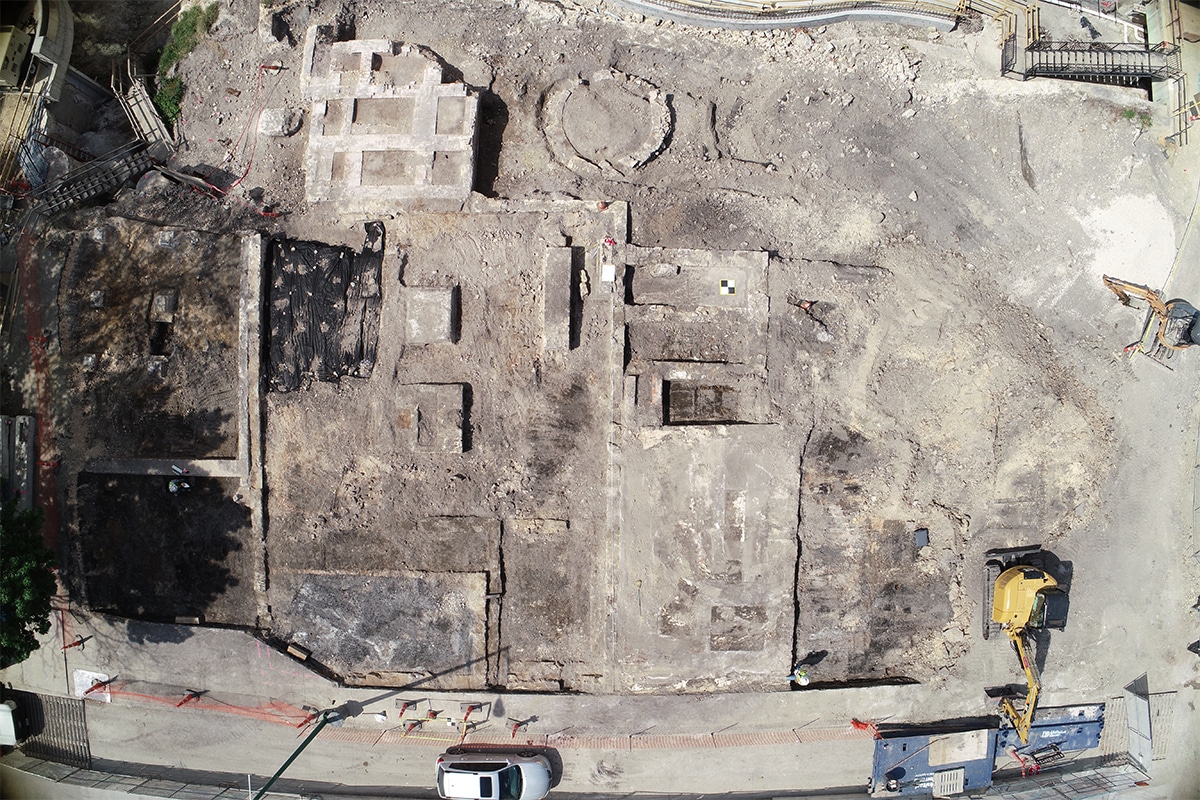Flowing with Culture
San Pedro Creek is where the Spanish first settled in our community and where the Payaya people lived for thousands of years prior to the Spanish settlements. Over the course of the last 300 years, many groups lived, worked and worshipped along San Pedro Creek. This historic creek became the location where the convergence of civilizations in our community took root and evolved.
Key Features
Historic Wall Preserved
10,000-20,000 years ago
Before “history” was even being written down
Archaeologists and paleontologists tell us that there are many signs of prehistoric human habitation here from as far back as 10,000 to 12,000 years ago. The waters of the spring-fed creek were a source of sustenance and refreshment for the indigenous people who were the first to settle here.
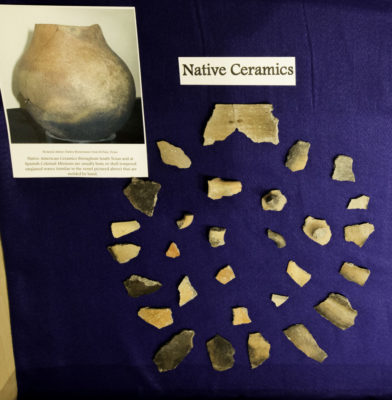
Bison, deer, and antelope were plentiful, as were fish and shellfish in the creek. Wild plants provided fruits, nuts, roots, and berries. The area was also home to mammals that are now extinct.
This unwritten chapter in San Pedro Creek’s story went on and on for centuries. And it’s filled with mysteries that will never be solved and adventures that will never be recounted. Today, however, you can actually walk in the place where they happened.
June 13, 1691
The “beginning of the beginning” of San Antonio
Imagine what it must have been like for Governor Domingo Terán de los Ríos, the leader of a group of Spanish explorers. They had survived many hardships, so they were very tired and very relieved to discover this refreshing, welcoming oasis in an arid land.
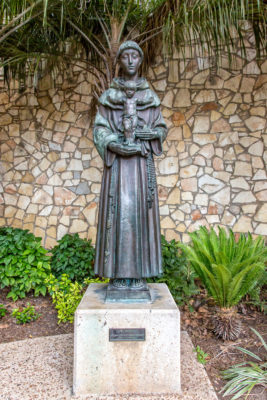 The explorers marveled at the rich vegetation and wildlife and decided to camp under the shade of cottonwood, oak, and mulberry trees near the river. That was in summer, on June 13, 1691, and it was the Feast Day of St. Anthony of Padua. Governor Domingo Terán de los Ríos announced that this place would be named San Antonio, in honor of the beloved saint. But the explorers could not stay at this restful place; they had more traveling and exploring to do, and so they moved on.
The explorers marveled at the rich vegetation and wildlife and decided to camp under the shade of cottonwood, oak, and mulberry trees near the river. That was in summer, on June 13, 1691, and it was the Feast Day of St. Anthony of Padua. Governor Domingo Terán de los Ríos announced that this place would be named San Antonio, in honor of the beloved saint. But the explorers could not stay at this restful place; they had more traveling and exploring to do, and so they moved on.
1709
A small creek makes a big impression
After that first expedition came and went, life continued on, much as it had before. Eighteen long years passed. Then, in 1709, another Spanish expedition arrived, led by Captain Pedro de Aguirre.
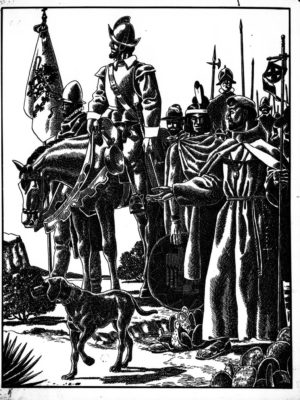
One member of the expedition was a Franciscan priest, Father Isidro Félix de Espinosa; he understood the opportunities and possibilities of this lush valley with its spring-fed river, creek, and peaceful Payaya indigenous people who resided here. Father Espinosa recorded in his diary that the creek was to be called Agua de San Pedro. The new Spanish name of the creek was destined to become permanent, but the Spanish explorers did not have the option to settle down here. Their quest was not over; they had more to discover and they needed to move on.
However, another padre who was part of the expedition found he simply couldn’t forget what he had encountered. This part of Texas and the gentle, intelligent Payaya people who lived here captured his intense interest. His name was Father Antonio de San Buenaventura y Olivares. And he began a long campaign to come back and build a mission in this special place. It took almost a decade, but he finally got his chance.
1716-1718
A mission is born
In 1716, Captain Domingo Ramón was sent to visit the area and confirm the reports of the earlier expeditions. Based on what he saw, he recommended establishing a settlement here.
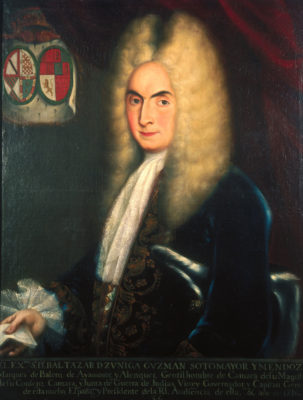
Within two years, Viceroy Marqués de Valero directed Governor Don Martín de Alarcón to mount an expedition and establish a presidio (a military garrison) and settlement here. And Father Olivares was appointed to go along and make his vision of a mission a reality.
Governor Alarcón—along with soldiers, their families, and livestock—arrived on April 25, 1718. Because he had taken a different route, Father Olivares arrived shortly afterwards, on May 1, 1718, and immediately broke ground just west of San Pedro Springs. He built a hut of brush and wild grapevines, offered Mass, and established the first (but not the last) site of Mission San Antonio de Valero. Just a few days later, in a ceremony held on May 5, 1718, Governor Alarcón founded the Presidio San Antonio de Béjar. He named it in honor of the viceroy’s family.
With this, the story of Bexar County and the City of San Antonio truly and officially begins—all because of a little (but mighty) creek.
1719
San Antonio’s first neighborhood
The springs provided abundant water, so those early settlers built their rustic houses, called jacales, nearby. These shelters were constructed of wood, mud, and straw—all materials that were right there for the taking. The settlers also turned their attention to growing crops.
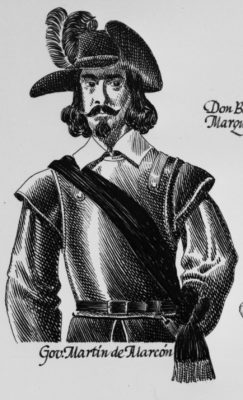
They established fields between the creek and the river—but had no way of getting adequate amounts of water to the crops themselves. The corn withered up and died in the summer’s heat. A few vegetables were saved by hauling buckets of water and hand-watering—only to be destroyed by a plague of mice.
In early 1719, Governor Alarcón issued an urgent order: the settlers were to work with the indigenous people to construct acequias (irrigation ditches). They channeled water from the east side of San Pedro Creek. The earliest acequia system irrigated about 300 acres, before flowing into the San Antonio River near today’s Tobin Center for the Performing Arts.
Once again, San Pedro Creek proved its importance. It wouldn’t be the last time.
1722
The creek brings together the military and civilians
When the eminent Marqués de Aguayo paid a visit in early 1722, he found that the little settlement had been burned—most likely because of frequent raids by Apaches.
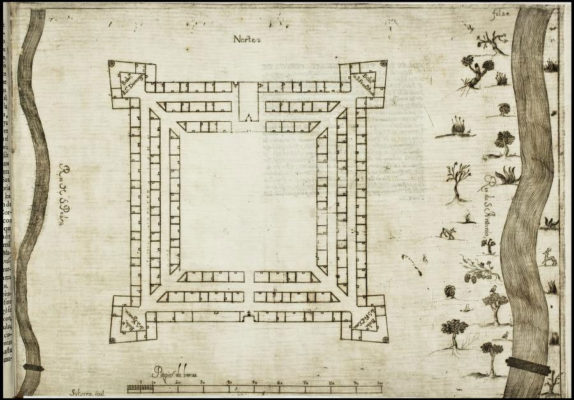
He had the presidio moved south to a site that would be easier to protect, between San Pedro Creek and the San Antonio River. He also ordered it to be built like a fortress on today’s Plaza de Armas (Military Plaza). Soon, soldiers and other settlers built houses and farmed the land that belonged to the presidio. Then, another big change, another leap forward, was on the horizon for San Pedro Creek.
1729-1735
The Spanish Crown plants the seeds of the City
In 1729, King Phillip V of Spain made it possible for a group of Canary Islanders to come to the New World as civilian settlers. The journey took them two long, hard years. They arrived here on March 9, 1731.
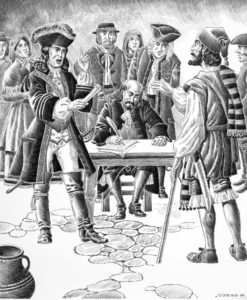
This group of Isleños (Islanders) consisted of fifteen families—a total of 56 men, women, and children. They had been promised generous rewards at the end of their journey: the right to form a town government, land grants, and the title of hidalgo (a Spanish rank of nobility).
Captain Juan Antonio Pérez de Almazán, the commander of the presidio, laid out the plan for their new villa (town), which was called San Fernando de Béxar. It included a plaza, church, a government house, the ejido (town common) and labores (farm lands). Because the crown authorized it, this became the first official civilian settlement in Texas.
To provide water to the presidio, the villa of the Isleños, and nearby farming lands, a new acequia was dug. It stretched for four miles to the south—from San Pedro Springs to near the point where San Pedro Creek merges with the San Antonio River. The acequia was likely completed and functioning sometime in 1734, because in April of 1735, an Isleño senior alderman decreed that its embankments and fencing had to be repaired. Apparently, roaming livestock had trampled newly planted and irrigated fields—and this kind of thing was no longer going to be tolerated. What had been wild was now being tamed.
1745-1779
Growth and progress
The three groups of residents—military, missionaries, and civilians—prospered and expanded.
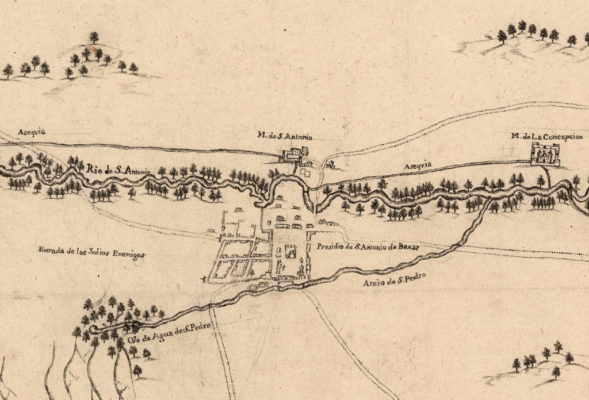
This group of Isleños (Islanders) consisted of fifteen families—a total of 56 men, women, and children. They had been promised generous rewards at the end of their journey: the right to form a town government, land grants, and the title of hidalgo (a Spanish rank of nobility).
Captain Juan Antonio Pérez de Almazán, the commander of the presidio, laid out the plan for their new villa (town), which was called San Fernando de Béxar. It included a plaza, church, a government house, the ejido (town common) and labores (farm lands). Because the crown authorized it, this became the first official civilian settlement in Texas.
To provide water to the presidio, the villa of the Isleños, and nearby farming lands, a new acequia was dug. It stretched for four miles to the south—from San Pedro Springs to near the point where San Pedro Creek merges with the San Antonio River. The acequia was likely completed and functioning sometime in 1734, because in April of 1735, an Isleño senior alderman decreed that its embankments and fencing had to be repaired. Apparently, roaming livestock had trampled newly planted and irrigated fields—and this kind of thing was no longer going to be tolerated. What had been wild was now being tamed.
1819
Tragedy and destruction
Then came the flood of 1819—and everything changed. Living and working near San Pedro Creek and the San Antonio River turned from desirable to devastating.
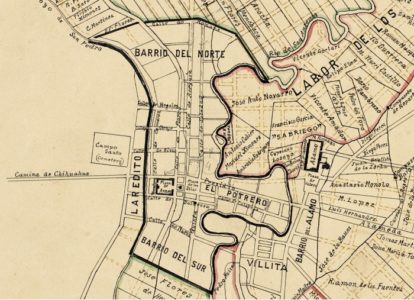
Source: “Historical Map of Old San Antonio de Bexar as it was in 1837 or 75 Years Ago.”
The flood was enormously powerful and seems to have covered a huge amount of area; it quite possibly involved both the creek and the river. Governor Antonio Martínez described the horrors to his superiors in Mexico, observing that “it was all one river” from the vicinity of the walls of Mission Valero, east of the San Antonio River to San Pedro Creek, which crosses the city on the west.
After the flood, a lesson had been learned by many: fear San Pedro Creek; fear the San Antonio River; do not trust them. And so, since most people lived between the two waterways and had a dread of flooding, the population shifted. The largest number of residents moved to the Barrio de Villita, which was on the high east bank of the San Antonio River. Today, we know it as beloved La Villita (the Little Village). Other segments of the population moved to the Barrio de Laredo, which was west of San Pedro Creek. It wouldn’t be the last time that our waterways would be perceived as both a blessing and a curse.
1830s
The creek attempts a comeback
As time passed—and memories of the flood likely faded a bit—small amounts of civic and commercial activity in the areas along the creek began again. The local economy was primarily based on agriculture and trade.
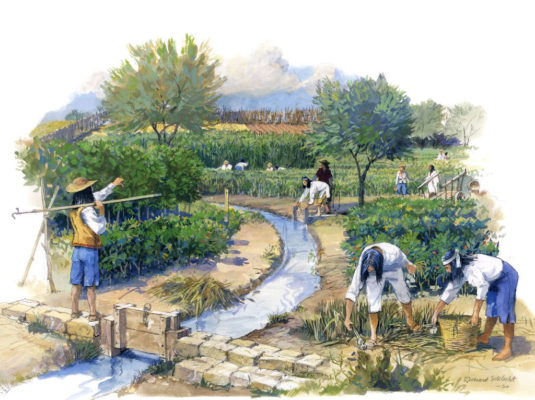
Residents raised food for their own households in small garden plots along the creek and acequias. They also sold their produce in open-air public markets.
As late as the 1830s, though, sparse development left the community unprotected from Comanche raids. Their isolation was compounded by having to rely on easily eroded low water crossings and crude roads that didn’t make travel or transportation easy.
Then, in the mid-1830s, came deep political unrest—followed by war. And once again, the history of San Pedro Creek changed course.
1836
The Texas Revolution reaches the creek
Like most of San Antonio de Béxar, the area around the creek was a scary and unsafe place to be during the Siege of Béxar and the subsequent Battle of the Alamo. Most of the residents became refugees and fled.
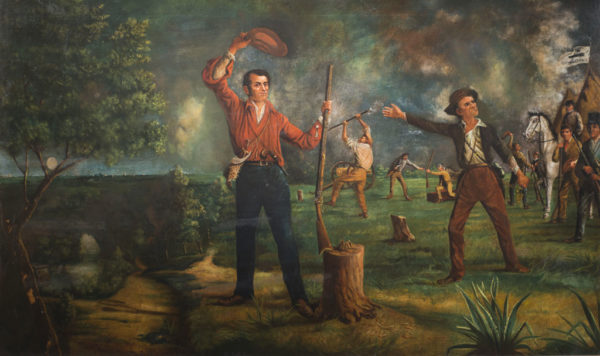
The refugees didn’t return until Texas independence was achieved through the Battle of San Jacinto in April of 1836.
Those who did so were likely pleased with their hard-won independence—but disheartened by the destruction that had taken place during their absence. The presidio and commandancia (known today as the Spanish Governor’s Palace) were in poor shape.
The cherished church of San Fernando, which had suffered a fire in 1828, had been further damaged during the revolution. It was in ruins, as were homes and stores. San Pedro Creek was still flowing, though. As was the determination, spirit, and political will of those who decided to rebuild their lives and the place they called home. Once again, a new chapter in the creek’s story began.
1837-1850
A new Republic is created
In December 1836, the Congress of the Republic of Texas created Bexar County. And in January 1837, Béxar (as San Antonio was called back then) was incorporated.
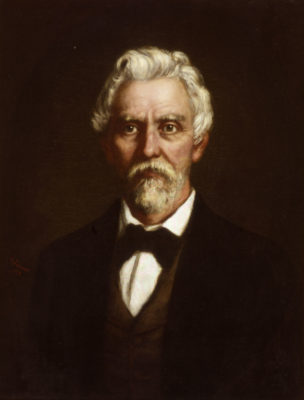
Municipal elections were held nine months later on September 19. The new mayor, John W. Smith, his group of aldermen, and other officials took on the enormous task of rebuilding both the town’s physical and governmental structure.
It’s estimated that there were about 1,800 residents then—but that began to change. Settlers from England, Continental Europe, and the eastern United States arrived. They began acquiring land from long-time owners. Some of it was land along San Pedro Creek. So that’s when the names of prominent historical figures like John W. Smith, Samuel A. Maverick, and Thomas J. Devine became associated with the fate of the creek.
It was in 1845 that Texas was welcomed as a state into the union. However, the community’s post-war recovery still proceeded slowly. There was so much to do that government officials had to rely on residents and landowners to take on major repairs themselves. This included structures that were essential to the community’s survival: the bridges, the acequias, as well as the slaughterhouse that was west of San Pedro Creek.
Records from the City Council deliberations during the 1840s give us a glimpse of what was happening to San Pedro Creek at the time. Probably for environmental and water quality reasons, the council declared that all beef must be slaughtered west of the creek or east of the acequia called the Alamo Ditch.
There was also an issue about water rights from the Main Ditch (as the San Pedro acequia was known at the time.) There had been an influx of foreign residents—mostly from Germany and France. There were complaints that the newcomers were not following the rules about water rights. This was likely because they were not yet completely fluent in English or Spanish. The Council wisely ordered that water rights laws be published in both French and German.
In March of 1849, it had become clear to the City Council that there was a need to raise governmental funds for infrastructure improvements. A committee was formed and a recommendation was made to survey and subdivide the public land west of San Pedro Creek. Surveyor François Giraud was hired for $50. His resulting grid pattern of streets and lots opened a new area for expansion and construction; beginning in 1850—and for many years thereafter—the new lots were sold by the city at auction to individuals who represented a cross section of the community. Once again, multi-culturalism and diversity ruled the day.
1850s
San Pedro Creek becomes a major player for entrepreneurs
San Antonio went through a substantial population increase in a single decade. In 1850, there were about 3,500 residents. In 1860, there were over 8,200.
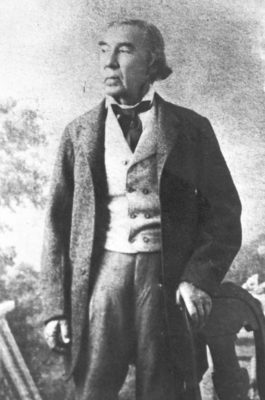
The residential and commercial development affected every part of town—including the area along and near San Pedro Creek.
An especially illustrious Texas name became associated with the creek. José Antonio Navarro, who had owned land and a small house on the west bank of the creek since the early 1830s, decided to build a new house and a two story commercial building there. Entrepreneurs saw the potential too of a reliable water source. Frederick Klemcke began making soap in a small building on San Pedro Creek in 1849.
Two years later, in 1851, he sold his business to Simon Menger, who expanded the facility. After a flood in 1859, the San Antonio Soap Works moved to another location on the creek and operated there until 1917. Near the soap works and the creek, Henry Karber operated a brewery. There were other small industrial operations near the creek as well, including a brewery operated by Dan Heber farther to the south.
With all the growth and development, however, obstructions that blocked the flow of the San Antonio River (like bathhouses, fences, and debris) had also become an issue for San Pedro Creek. To solve the problem of the obstructed flow, city ordinances were passed. The creek was deepened and widened, and a uniform, twelve-foot-wide creek channel was constructed. The result? Little by little, the natural creek bed began to disappear; it was being replaced with stone and concrete. And so, the ‘boom’ period of San Pedro Creek continued on, as more history was made.
1854-1863
Shopping, soldiers, and shipping around San Pedro Creek
Because of all the population growth, the City Council approved three new marketplaces where all the goods and needs of daily life could be bought and sold. Two of the three were near San Pedro Creek.
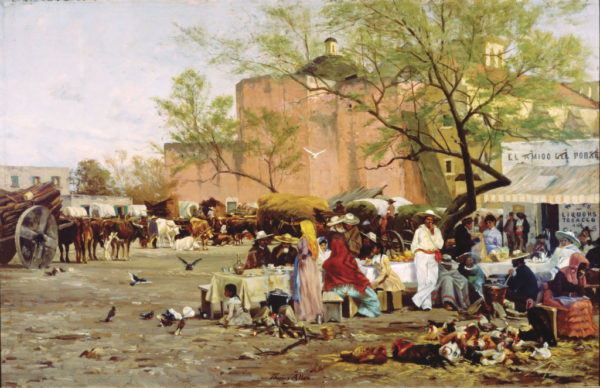
Military Plaza (Plaza de Armas) was east of the creek. It was a lively outdoor market where vendors gathered to sell most anything: wool, hides, even caged birds. But perhaps the most famous attraction was the spicy concoction known as chili con carne that was served up with flamboyant style by women known as “chili queens.”
West of San Pedro Creek, another market was established on land that was called Paschal Square. Centuries later, that same site is still in use as a colorful marketplace. It’s known today as El Mercado (Market Square)—and people continue to flock to it for San Antonio-style food, shopping, and entertainment.
San Pedro Creek had always been an important crossroads for military expeditions and troops. First it was Spanish soldiers sent by the King of Spain. Then came the Texas patriots fighting for independence. So it should be no surprise that in the 1800s, the creek was connected to military activities. In 1854, for instance, the United States Army experimented with the use of camels in the arid lands of the Southwest. They temporarily stabled these “ships of the desert” in San Pedro Springs Park. Because of this use, quite a bit of damage was done to the park and springs. Later, during the American Civil War, Confederate troops camped near the springs where the creek originated and used today’s park as a prisoner-of-war camp.
Trade and shipping have had long associations with the creek. To the south, near downtown and along Laredo Street, teamsters congregated in camp yards along both sides of San Pedro Creek. It’s where they loaded their wagons with cotton and other goods destined for Mexico. According to Leonardo Garza, a descendant of the town’s early settlers, the greatest commerce seemed to have been the traffic from Port Lavaca on the Texas Gulf Coast, which brought all the goods for the stores. Those who worked in that industry camped along San Pedro Creek where they formed a little village. And San Pedro Creek kept on flowing right along—and started its next chapter that was set in The Old West.
1870-1889
The land of cowboys and railroads
In the 1870s, when cattle drives originated in Texas and ended in Midwestern markets, San Pedro Creek became a major staging area. Cowboys wrangled the large herds into holding pens west of the creek, and much trading and shipment took place.
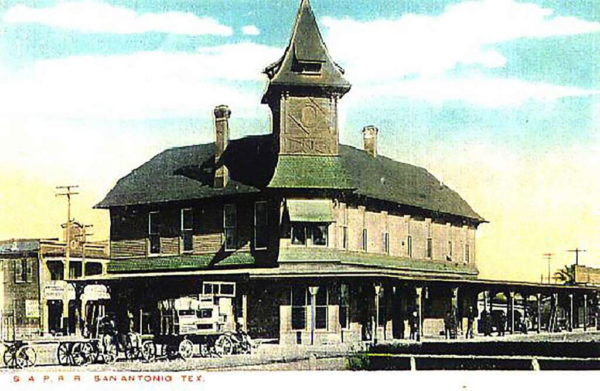
Then, when the International and Great Northern Railroad (I&GN) station was completed in 1881, growth really took off. The station was located several blocks west of the creek at the intersection of Commerce and Medina streets. It quickly became the town’s main shipping point for freight—not just cattle being sent to Midwestern meat-packing houses. Once that happened, it became clear that the area needed efficient public transportation. Both the Dolorosa/Buena Vista right-of-way and streetcar lines were extended to the station. In turn, this moved the business and population further from San Pedro Creek.
The San Antonio and Aransas Pass Railroad (SAP) arrived in 1885. Its tracks traversed former agricultural fields that had been farmed since the Spanish colonial era. Then, in 1889, Texas ranchers decided to improve shipping routes by moving them away from the city’s congestion. They established the San Antonio Stock Yards Company (later named the Union Stock Yards of San Antonio). They chose a site on the west bank of San Pedro Creek. It was at the junction of the Galveston, Harrisburg & San Antonio (later part of Southern Pacific) and I&GN tracks. It wasn’t long before the stockyards became the main receiving point for shipment of cattle to San Antonio from South Texas. In fact, by the time 1950 rolled around, the stockyard was still the state’s largest cattle market. Meanwhile, San Pedro Creek just kept flowing along, contributing to the history and progress being made.
Early 1900s
Amid a changing city, the creek stays constant
In the last decades of the 19th century, Military Plaza (Plaza de Armas) began looking noticeably different. Small colonial and post-colonial structures were replaced by multi-story brick and stone buildings.
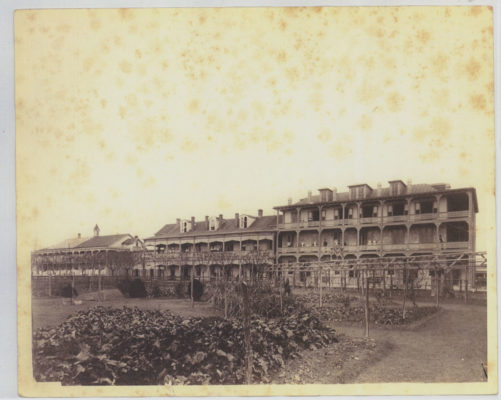
San Pedro Creek’s east bank—where the commandancia was—became the home of the Fashion Theater and Landa Brothers store. The once-important commandancia had been relegated to housing a feed store and a pawn shop. On the west side of the creek, the three-story Laclede Hotel (later known as the Continental) opened in 1898.
All the produce vendors and chili queens who had dominated the plaza for years were gone, too. They had been moved to Hay Market Square, which was west of the creek, near Milam Park.
By the time the early 1900s rolled around, the neighborhood west of the creek had attracted merchants who ran small shops. These merchants included another influx of immigrants; this time they were from Italy, China, and Mexico. There were African-American residents, too, in this diverse mix. In addition to all the merchants and their shops, the area became known for its saloons and the well-publicized red-light district that was advertised in the 1912 publication, The Blue Book for Visitors, Tourists, and Those Seeking a Good Time While in San Antonio, Texas, 1911-1912.
North of the red-light district, the market, and Milam Park, the Sisters of Charity of the Incarnate Word had relocated their infirmary from Military Plaza to Houston Street in 1875. The facility continued to grow into a multi-building complex known as Santa Rosa Hospital (now The Children’s Hospital of San Antonio). Because of this medical facility, physicians and pharmacists moved into the area.
By the time the 1920s came around, the neighborhood between Milam Park and San Pedro Creek had become the new home of refugees fleeing the Mexican Revolution. Shops, newsstands, and merchants of all kinds opened. Entertainment venues followed. On weekends, crowds came to Milam Park for everything from political rallies to musical performances. Vaudeville houses attracted popular entertainers of the time. Later, movie theaters screened the latest films.
Beyond Milam Park and Santa Rosa Hospital to the north, the neighborhood of Franklin Square was also thriving. It was here that the Christopher Columbus Italian Society, founded in 1890, later built their San Francesco di Paola Church in the late 1920s, and the park was renamed “Columbus Park.”
As you could probably guess, however, the existence of the creek in its relatively natural state and the growth of the city were destined for confrontation. And a bittersweet chapter in the creek’s story began in a new century.
1900s
Little by little, the creek is forgotten
Throughout the 20th century, the city had made necessary progress, but San Pedro Creek paid a high price for it.
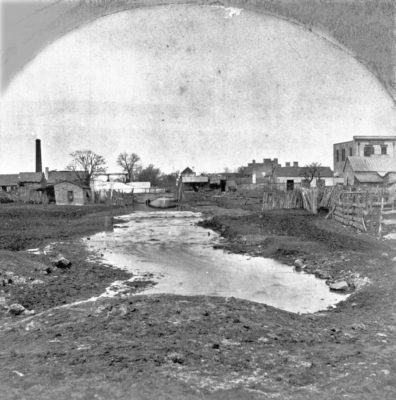
In attempts to prevent the frequent occurrence of floods, the natural creek was almost engineered out of existence. The deadliest of these disasters took place in September of 1921. There was massive destruction in the downtown area and neighborhoods adjoining the river and the west side creeks—which included San Pedro Creek. The loss of life was horrifying; there were 51 people confirmed dead—and others missing. All but 4 of the deaths occurred along the creeks.
Consequently, a series of decisions were made by the city throughout the 1900s. The end result was that San Pedro Creek was still there—but it had been sent into hiding. It was no longer in plain sight, as it had been for centuries.
And so, this chapter of San Pedro Creek’s story ended with a low, almost unheard cry. The natural beauty of the creek had been all but destroyed—or at least constrained and hidden. Everything that had once attracted so many historic individuals and events over the centuries seemed to be gone forever. The city had made necessary progress. However, San Pedro Creek had paid a high price for it.
But take heart! The creek’s story was not actually over. An idea for a new purpose for the creek was flowing and channeling strength.
May 5, 2018
A new reason to flow
There is a new chapter and a new vision for this determined and persevering little creek of ours.
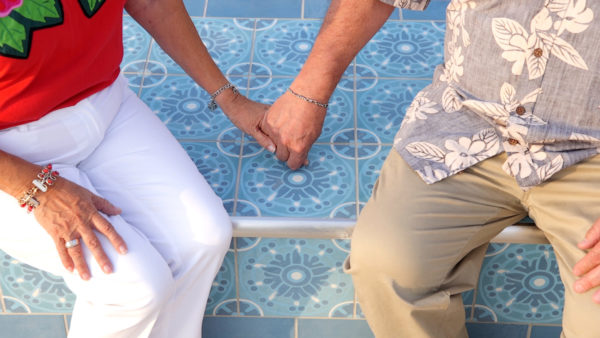 The San Pedro Creek Culture Park opened to the community with a day-long family celebration. Thousands of people came out to take part in the grand opening celebration that included music, food and lots of family fun.
The San Pedro Creek Culture Park opened to the community with a day-long family celebration. Thousands of people came out to take part in the grand opening celebration that included music, food and lots of family fun.
It’s a historic collaboration that gave Bexar County, the San Antonio River Authority, and the City of San Antonio a common vision and goal.
The natural environment of San Pedro Creek is being restored—with a purpose that goes well beyond just being beautiful and enjoyable. It combines public art and architectural design, hydrology science, the biosciences, engineering, and native horticulture. It focuses on the creek’s natural beauty, the rich and colorful story of its own history, the cultural identity and traditions of the community around it, and flood control.
It’s a new chapter for this historic creek that will be enjoyed now and remembered always. We invite you to be part of history.
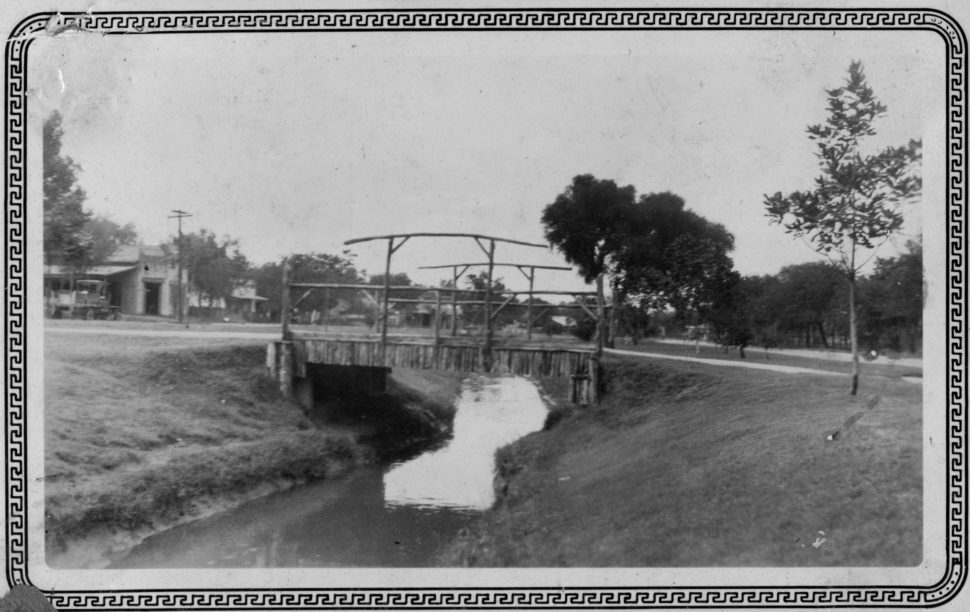
A pilón—a little something extra— from San Pedro Creek’s history
You might expect a creek and area that has such a vibrant, memorable history would have sparked some equally intriguing myths and legends. And you’d be right.
Something discovered
The creek’s roots go deep. Unearth the days of old and rediscover the rich history of San Pedro Creek.
